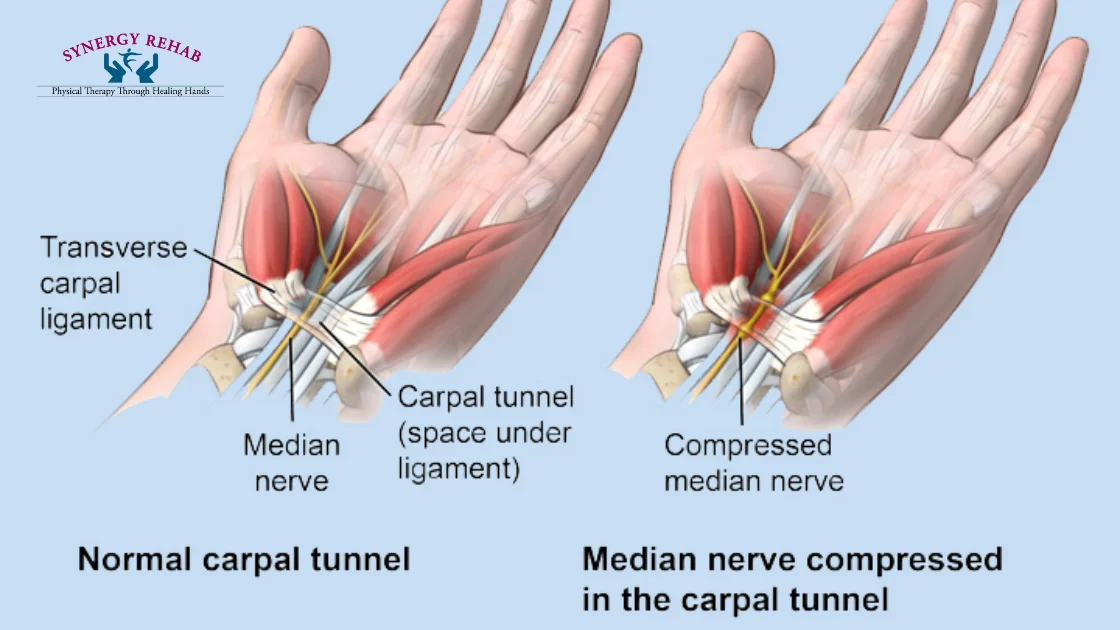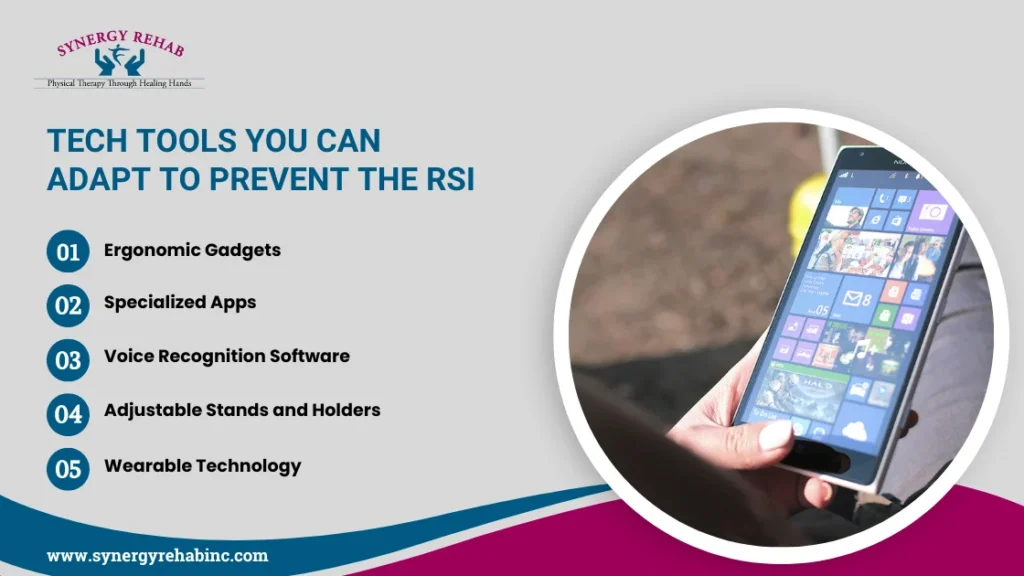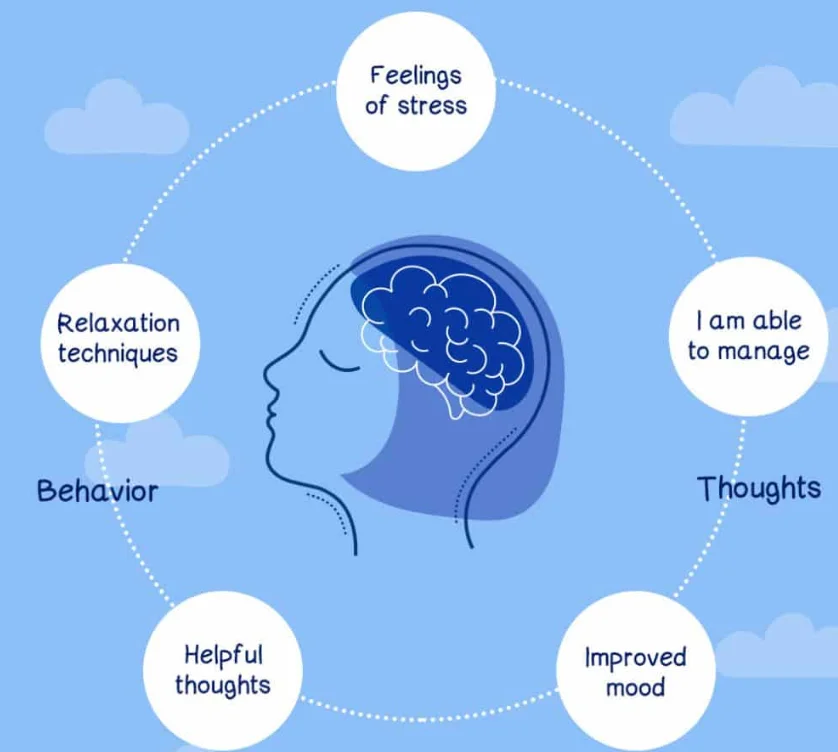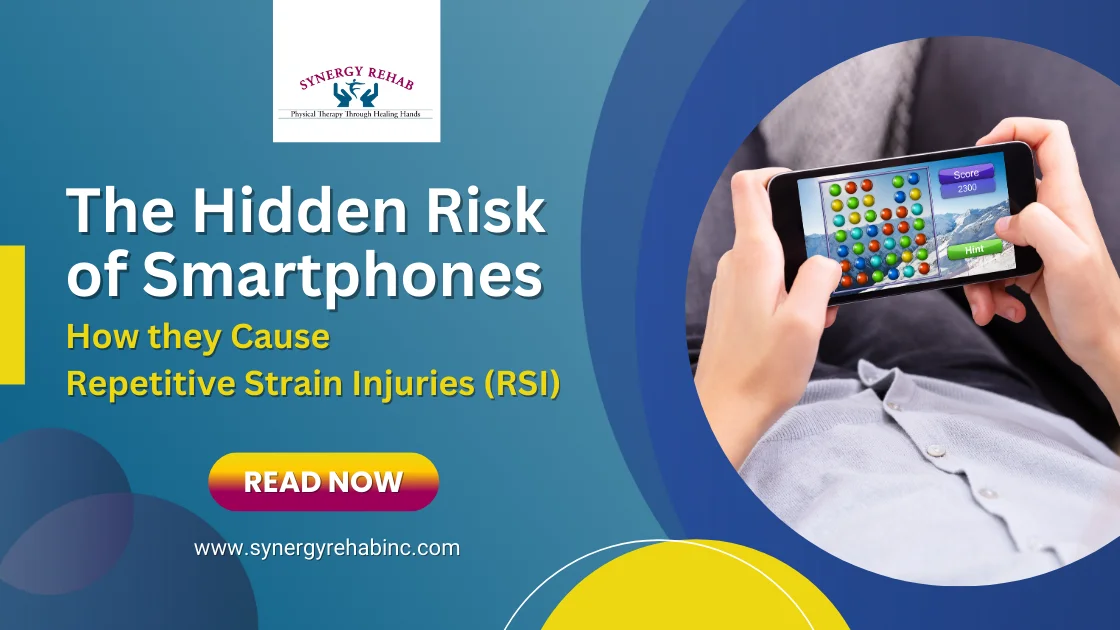In the modern and constantly pacing lifestyles, smartphones have transcended their role as mere communication devices to become indispensable tools for work, entertainment, and social interaction. However, this convenience comes at a cost. The compact design and interactive touchscreens of smartphones necessitate repetitive motions—such as thumb swipes, finger taps, and prolonged gripping—that can exert undue strain on the muscles and tendons of the hand and wrist. Over time, these repetitive actions can manifest as Repetitive Strain Injuries (RSIs), a condition that was once predominantly associated with desktop computer use but is now increasingly linked to our handheld devices.
What Causes RSI?
The ergonomics—or lack thereof—of smartphone usage often goes unnoticed in daily life. We spend hours scrolling through social media, texting, and browsing the web with our hands fixed in unnatural positions. This constant, repetitive motion places stress on the same muscle groups and tendons without adequate rest, leading to inflammation, pain, and, in severe cases, long-term damage. The phenomenon is so widespread that it has given rise to new terms such as “text thumb” and “smartphone pinky,” underscoring the direct connection between smartphone use and the rise in Repetitive Strain Injuries.
The Symptoms of RSI
What makes RSIs particularly concerning is their insidious onset. Symptoms may start as a mild inconvenience—slight discomfort or a tingling sensation in the fingers—making it easy to overlook the initial warning signs. Other common symptoms include pain, numbness, and decreased range of motion, urging readers to heed these early warning signs.
Without intervention, these symptoms can escalate into chronic pain, reduced hand mobility, and, in some cases, nerve damage that necessitates repetitive strain injury therapies or more intensive repetitive strain injury treatment.
Science Behind Repetitive Strain Injuries

The anatomy and mechanics of Repetitive Strain Injuries (RSIs) reveal why smartphones pose a significant risk. Continuous, minor movements required by smartphone use can cause substantial pain and dysfunction in muscles, nerves, and tendons over time.
Here’s how it works:
- Continuous small movements are key contributors to Repetitive Strain Injuries.
- Smartphones demand repetitive tapping, increasing RSIs risk in users.
- RSIs affect muscles, nerves, and tendons through prolonged device interaction.
- Anatomy of strain injuries shows vulnerability of hand to smartphone use.
- Prevention requires ergonomic adjustments to minimize Repetitive Strain Injuries.
Early detection and intervention are crucial for managing strain injury effects.
How to Prevent Repetitive Strain Injuries
Preventing Repetitive Strain Injuries (RSIs) from smartphone use requires mindful adjustments and ergonomic practices. Awareness and early recognition of RSIs enhance recovery outcomes and prevent further damage.
How to prevent such injuries:
- Incorporate ergonomic principles to reduce Repetitive Strain Injuries risk
- Alternate fingers during smartphone use to distribute strain evenly
- Utilize voice commands to minimize tapping and repetitive movements
- Take regular breaks for hand stretching and resting to prevent RSIs
- Educate on smartphone-related health impacts for early RSI detection
- Seek Physical Therapy for RSI early to improve recovery.
As we navigate the conveniences and challenges of the digital age, understanding the hidden risks associated with smartphone use is vital. By adopting healthier tech habits and integrating ergonomic practices into our daily routines, we can enjoy the benefits of connectivity without compromising our physical well-being.
Innovative Tech Solutions for RSI

The prevalence of Repetitive Strain Injuries (RSIs) has spotlighted the need for innovative tech solutions. This section explores the intersection of technology and health, introducing ergonomic devices and software designed to promote healthier smartphone use. By encouraging proper use and posture, these technological interventions aim to mitigate the risks associated with RSIs, underscoring the importance of Repetitive Strain Injury Treatment and Physical Therapy for RSI as part of a holistic approach to digital well-being.
Here’s a list of some tech tools you can adapt to prevent the RSI:
- Ergonomic Gadgets: The Logitech Ergo M575 Wireless Trackball Mouse reduces wrist movement, lowering RSI risk.
- Specialized Apps: "Stretchly" prompts users to take micro-breaks and perform stretches, encouraging healthy habits.
- Voice Recognition Software: Google's Voice Typing on Android devices helps minimize manual typing, reducing finger strain.
- Adjustable Stands and Holders: The Rain Design mStand Mobile raises the phone to eye level, promoting better posture.
- Wearable Technology: The Upright GO posture trainer vibrates gently to remind users to adjust their posture, promoting spinal health.
The Psychological Impact of Strain Injuries
Chronic pain from Repetitive Strain Injuries does more than just affect physical capabilities; it deeply influences one’s mental health. The persistent discomfort can lead to increased levels of stress, anxiety, and depression. This is due, in part, to the brain’s pain pathways, which are closely linked to the areas responsible for mood and stress regulation. Chronic pain can trigger a stress response, leading to elevated cortisol levels, which, over time, can affect mood, sleep, and overall mental well-being.
Conversely, psychological stress can heighten the perception of pain, creating a vicious cycle that can be challenging to break. Understanding this bidirectional relationship is crucial for effective RSI management, highlighting the need for treatments that address both the physical and emotional aspects of pain. This is where physical therapy comes in.
Physical Therapy for Repetitive Strain Injuries

Physical therapy begins with an assessment leading to customized exercise regimens specifically designed to strengthen the muscles around the affected area, thereby reducing RSI symptoms. These exercises focus on gently building up the muscle without overexertion to avoid further strain. For example, if you’re dealing with wrist RSI, your therapist might include wrist flexor and extensor exercises.
Here is a breakdown of the process of how physical therapy works to treat repetitive strain injuries.
Stretching Routines
Stretching routines are the cornerstone of Repetitive strain injury treatments, aimed at improving flexibility and promoting blood flow to the injured area, which is crucial for healing. Regularly performing targeted stretches can significantly reduce stiffness and pain.
Tip: Integrate stretching into their daily routine, perhaps as a break during work hours, with examples like neck rolls and shoulder stretches for those spending long hours at a computer.
Ergonomic Training
Ergonomic training addresses the root cause of many RSIs, focusing on correct posture and the use of devices. This training is tailored to individual needs, whether it’s adjusting the height of an office chair, the position of a computer monitor, or the technique used to perform repetitive tasks. Practical advice, such as the 20-20-20 rule (every 20 minutes, look at something 20 feet away for 20 seconds) to reduce eye strain for computer users, can be invaluable.
Pain Management Techniques
Physical therapists employ a variety of pain management techniques, including cold/heat therapy, massage, and ultrasound therapy. Each method has its unique benefits, such as cold therapy to reduce inflammation and heat therapy to relax muscles and improve blood circulation. Your physical therapist can help you to understand how to apply these therapies.
Recovery Planning
A well-structured recovery plan is essential for effective Repetitive strain injury management. Physical therapists work with individuals to set realistic goals and timelines, adjusting the plan as recovery progresses. Remember, patience and consistency are the keys to seeing the full results. Your physical therapist would lay down a holistic and structured plan for you, with the expected timelines as to when you can see and experience the full range of motion, eliminating the pain and discomfort.
Integrating Mental Health in Physical Therapy
A holistic approach to Repetitive strain injury treatments that incorporates mental health support alongside physical therapy is essential for effective management. Integrated treatment plans that address both aspects can lead to better outcomes, reducing pain levels and improving mental well-being. Examples of successful integrated approaches include cognitive-behavioral therapy (CBT) to address pain-related anxiety and depression, alongside traditional physical therapies such as stretching, strengthening exercises, and ergonomic training. By treating the mind and body as interconnected components of the healing process, you can achieve a more comprehensive and lasting recovery.

Image Source: Kazmo Brain Center
Physical therapy for RSI helps not just in recovery but in fostering a deeper understanding of body mechanics, encouraging a proactive approach to health, and ultimately leading to a more active and pain-free life.
Conclusion
As smartphones continue to play a pivotal role in our lives, it’s imperative to recognize and mitigate the risks they pose to our physical health. By understanding the causes, symptoms, and treatments of RSIs, and making informed adjustments to our technology use, we can enjoy the benefits of connectivity without compromising our well-being. If you’re experiencing symptoms of Repetitive Strain Injuries, remember that early intervention is key to a quick and effective recovery.
Synergy Rehab’s experienced physical therapists in Southfield stand ready to assist you with top-notch physical therapy services. Our experienced team specializes in treating RSIs and offers personalized rehabilitation programs designed to get you back to your best self. Don’t let the pain hold you back—reach out to Synergy Rehab today and take the first step towards a healthier, pain-free life with your technology.
Contact Synergy Rehab now to schedule your appointment and embark on your journey to recovery. Your health can’t wait, and with the right support, you can overcome the hidden risks associated with smartphone use.
Frequently Asked Questions
RSIs are injuries caused by repetitive motions or overuse of a particular part of the body. They are a concern because they can lead to chronic pain, limited mobility, and, in severe cases, disability.
If you experience symptoms such as pain, numbness, or tingling in your hands or wrists after using your smartphone, it may be a sign of Repetitive strain injury.
Taking regular breaks, using ergonomic accessories, and being mindful of your posture while using your smartphone can all help prevent RSIs.
Yes, there are apps designed to remind you to take breaks and ergonomic devices like phone stands and external keyboards that can help reduce strain.
Physical therapy for RSI can help by providing tailored exercises and stretches that strengthen the affected area and improve flexibility, aiding in recovery.
While many RSIs can be significantly improved with treatment, some may require long-term management to prevent recurrence.



